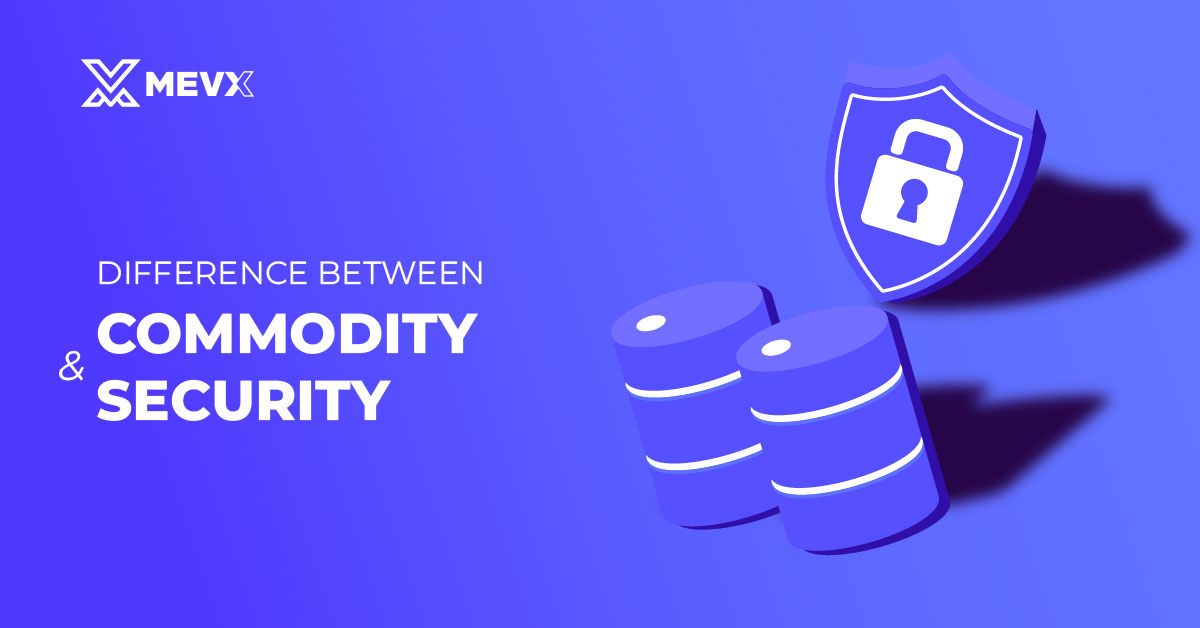The difference between commodity and security is a critical distinction in the world of finance and investment, rooted in their definitions, applications, and operational frameworks. While both represent tradable assets, they serve distinct purposes and operate under different rules.
A commodity is a tangible, often raw material like oil, gold, or corn, whereas a security is a financial instrument, such as a stock or bond, tied to ownership or debt.

The Difference between Commodity and Security
Nature and Definition
The most fundamental difference between commodity and security lies in their essence.
Commodity: These are physical goods, typically raw materials or primary products, that are standardized and interchangeable. For example, a bushel of wheat from one supplier is functionally identical to another, assuming the same quality. Commodities are divided into categories like metals (gold, silver), energy (crude oil, natural gas), and agricultural products (coffee, soybeans).
Security: These are intangible financial instruments representing ownership (e.g., stocks in a company), a creditor relationship (e.g., bonds), or derivative rights (e.g., options). Unlike commodities, securities are unique to the issuing entity—a share of Apple stock is not interchangeable with a share of Microsoft.
This distinction in tangibility and specificity sets the stage for how each asset is used and valued.
Trading Mechanisms and Markets
The difference between commodity and security extends to how they are bought and sold.
Commodity: Traded primarily on commodity exchanges like the Chicago Mercantile Exchange (CME) or the Intercontinental Exchange (ICE), commodities are often exchanged via futures contracts, which lock in prices for future delivery, or spot markets for immediate transactions. Physical delivery can occur, though many traders settle in cash.
Security: Securities are traded on stock exchanges (e.g., NYSE, Nasdaq) or over-the-counter (OTC) markets. Transactions typically involve electronic ownership transfers rather than physical goods, with settlement occurring within days (e.g., T+2 in the U.S.). Derivatives like options and swaps also exist but are tied to underlying securities, not physical assets.
Regulatory Framework
A significant difference between commodity and security is the legal oversight governing them.
Commodity: In the U.S., the Commodity Futures Trading Commission (CFTC) regulates commodity markets under the Commodity Exchange Act. The focus is on ensuring fair pricing, preventing manipulation (e.g., cornering the market), and overseeing futures and options trading. Regulations are relatively flexible to accommodate global supply chains.
Security: The Securities and Exchange Commission (SEC) oversees securities under the Securities Act of 1933 and the Exchange Act of 1934. Issuers must provide detailed disclosures (e.g., quarterly reports, prospectuses) to protect investors, making compliance more stringent than for commodities.
Market Participants
The difference between commodity and security also manifests in who trades them.
Commodity: Participants include producers (e.g., farmers, oil companies), consumers (e.g., manufacturers, refineries), and speculators (e.g., hedge funds betting on price movements). Hedgers use commodities to lock in costs or revenues, while speculators seek profit from volatility.
Security: Investors dominate this space, ranging from individuals buying stocks for retirement to institutional players like mutual funds. Companies and governments issue securities to raise capital, while traders aim for dividends, interest, or capital gains. Speculation exists but is less tied to physical supply chains.
Risks and Volatility
Risk profiles further illustrate the difference between commodity and security.
Commodity: Prices are highly volatile, driven by external factors like weather (e.g., droughts affecting crops), geopolitical events (e.g., oil embargoes), and supply-demand imbalances. This makes commodities riskier in the short term but valuable for diversification or inflation protection.
Security: Risks stem from company performance (e.g., poor earnings), market sentiment, or macroeconomic trends (e.g., interest rate hikes). While less volatile than commodities in some cases, securities can face systemic risks, like market crashes. Long-term growth potential often balances these risks.

Real-World Examples and Overlaps
To contextualize the difference between commodity and security, consider practical examples:
Commodity: Gold is traded as a physical asset on commodity markets, valued for its scarcity and industrial use. Its price reflects global supply and demand.
Security: A share of Tesla stock represents ownership in the company, with its value tied to Tesla’s profitability and market perception.
Overlap: Cryptocurrencies like Bitcoin challenge the divide. The CFTC treats Bitcoin as a commodity due to its decentralized, gold-like properties, while the SEC may classify certain ICO tokens as securities if they promise returns tied to a venture.
The difference between commodity and security is multifaceted, spanning their physical versus financial nature, trading platforms, regulatory oversight, participants, and risk profiles. Commodities drive the physical economy with their tangible utility, while securities power financial markets through ownership and debt.
Understanding these distinctions equips investors and professionals to navigate both asset classes effectively, whether seeking short-term gains from commodity volatility or long-term wealth through securities. In an increasingly complex financial world, recognizing the difference between commodity and security is more essential than ever.
Curious about the latest trends in finance? Follow BlogMexX to keep learning and growing!
Share on Social Media:
